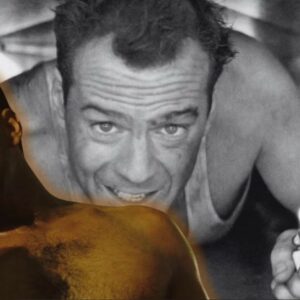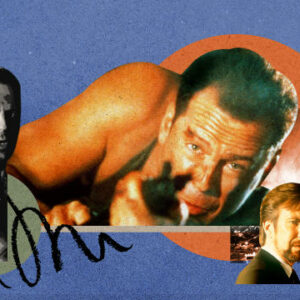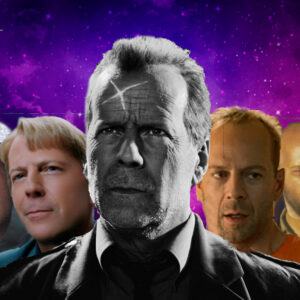Introduction
Ryan Gosling, a name that has become synonymous with modern cinematic excellence, has established himself as one of Hollywood’s most versatile and compelling actors. With a career spanning over two decades, Gosling’s performances have captivated audiences and critics alike. Known for his subtlety and emotional depth, he has carved out a unique niche in contemporary cinema. This article explores the nuances of Gosling’s acting style, comparing it to his peers and examining the distinctive traits that make him stand out.
Emotional Range and Subtlety
Ryan Gosling’s acting prowess is often lauded for its emotional range and subtlety. His ability to convey complex emotions with minimalistic gestures and expressions sets him apart from many of his contemporaries. In films like Blue Valentine (2010) and La La Land (2016), Gosling demonstrates an impressive command over his emotional landscape. His portrayal of Dean Pereira in Blue Valentine is a testament to his skill in portraying raw, unfiltered human emotions. The film’s gritty realism and emotional intensity are anchored by Gosling’s deeply affecting performance.
Comparing Gosling’s emotional subtlety to that of his peers, such as Leonardo DiCaprio and Joaquin Phoenix, reveals both similarities and differences. DiCaprio, known for his intense and often larger-than-life performances, excels in roles that require a broad emotional spectrum, such as in The Revenant (2015) and Shutter Island (2010). While DiCaprio’s approach is more overt, Gosling’s performances often rely on understated nuances. Joaquin Phoenix, on the other hand, shares Gosling’s penchant for psychological depth and emotional complexity, as seen in Joker (2019). However, Phoenix’s approach is often more volatile, whereas Gosling’s style leans towards restrained intensity.
Physicality and Presence
Gosling’s physicality and on-screen presence are crucial elements of his acting style. His performances often embody a unique blend of physicality and restraint, making his characters both captivating and enigmatic. In Drive (2011), Gosling’s portrayal of the nameless Driver is marked by a strikingly minimalistic approach. His controlled movements and subdued expressions create a character that is both elusive and magnetic. The film’s sparse dialogue is complemented by Gosling’s ability to communicate a wealth of emotions through body language alone.
In contrast, actors like Tom Hardy and Christian Bale exhibit a more overt physicality in their roles. Hardy, known for his transformative performances, uses physicality to embody diverse characters, such as in Mad Max: Fury Road (2015) and Venom (2018). His approach often involves significant physical alterations and intense physical performances. Bale, similarly, is known for his dramatic physical transformations, as seen in The Machinist (2004) and American Psycho (2000). While Hardy and Bale use physicality to create a more pronounced impact, Gosling’s approach is characterized by a more subtle, internalized form of physical expression.
Versatility and Genre Exploration
One of Gosling’s most notable attributes is his versatility across genres. His ability to seamlessly transition between romantic dramas, action films, and musical comedies highlights his range as an actor. In La La Land, Gosling’s performance as Sebastian, a struggling jazz musician, showcases his ability to blend musical talent with emotional depth. His chemistry with co-star Emma Stone and his portrayal of a passionate yet flawed artist add layers to the character, reflecting his versatility.
Gosling’s genre-spanning abilities can be compared to those of actors like Meryl Streep and Cate Blanchett. Streep, known for her chameleon-like adaptability, has portrayed a wide array of characters in genres ranging from drama to comedy. Blanchett, similarly, has demonstrated remarkable versatility, with standout performances in films like Blue Jasmine (2013) and The Lord of the Rings series. Gosling’s ability to navigate different genres with ease, while maintaining a distinct personal style, places him in a league with these acclaimed actors.
Character Complexity and Depth
Gosling’s commitment to character complexity is a defining aspect of his acting career. His ability to delve into the psychological and emotional intricacies of his roles often results in deeply layered performances. In The Place Beyond the Pines (2012), Gosling’s portrayal of Luke Glanton, a motorcycle stunt rider turned bank robber, is marked by a profound sense of internal conflict and moral ambiguity. His performance explores themes of fatherhood, redemption, and the consequences of personal choices, adding depth to the character.
When comparing Gosling’s approach to character complexity with that of actors like Daniel Day-Lewis and Gary Oldman, notable differences emerge. Day-Lewis, known for his immersive method acting, has delivered performances of extraordinary depth in films like There Will Be Blood (2007) and Lincoln (2012). His methodical approach often involves intense research and personal immersion into his roles. Oldman, with his chameleon-like transformations, brings a different kind of complexity to his characters, as seen in Darkest Hour (2017) and Tinker Tailor Soldier Spy (2011). While Day-Lewis and Oldman employ different techniques, Gosling’s focus on internal emotional resonance offers a distinct form of character exploration.
Emotional Resonance and Impact
Gosling’s ability to create emotional resonance with audiences is another hallmark of his acting style. His performances often leave a lasting impact, provoking deep emotional responses from viewers. In Half Nelson (2006), Gosling’s portrayal of Dan Dunne, a high school teacher struggling with addiction, is marked by a profound sense of vulnerability and authenticity. The film’s raw portrayal of personal struggle and redemption is anchored by Gosling’s emotionally charged performance.
This quality of emotional resonance can be compared to that of actors like Adam Driver and Michael Fassbender. Driver, known for his intense and emotionally raw performances in films such as Marriage Story (2019) and Paterson (2016), shares a similar ability to elicit strong emotional responses from audiences. Fassbender, with his commanding presence and emotional depth, has delivered impactful performances in films like Shame (2011) and 12 Years a Slave (2013). While Driver and Fassbender also excel in creating emotional impact, Gosling’s performances often combine subtlety with a deep emotional core, creating a unique resonance.
Collaborations and Director Relationships
Gosling’s collaborations with directors have played a significant role in shaping his career and honing his acting style. His work with directors like Nicolas Winding Refn and Damien Chazelle has resulted in some of his most memorable performances. In Drive, Refn’s distinctive visual style and storytelling approach are perfectly complemented by Gosling’s nuanced portrayal of the Driver. Similarly, Chazelle’s direction in La La Land allows Gosling to showcase his musical talents and emotional range, resulting in a critically acclaimed performance.
When comparing Gosling’s director collaborations to those of actors like Denzel Washington and Julianne Moore, interesting parallels and differences emerge. Washington, known for his collaborations with directors like Spike Lee and Antoine Fuqua, has delivered powerful performances in films such as Malcolm X (1992) and Training Day (2001). Moore, with her extensive body of work with directors like Paul Thomas Anderson and Todd Haynes, has created memorable performances in films such as Boogie Nights (1997) and Carol (2015). While Washington and Moore also benefit from strong director relationships, Gosling’s collaborations with distinct directorial voices have further defined his unique acting style.
Conclusion
Ryan Gosling’s acting mastery is characterized by a distinctive blend of emotional subtlety, physicality, versatility, and depth. His ability to convey complex emotions with minimalistic gestures, his unique physical presence, and his versatility across genres all contribute to his status as one of contemporary cinema’s most compelling actors. Comparing Gosling’s style to that of his peers highlights both the similarities and differences in approach, offering a comprehensive view of his contributions to the art of acting. As Gosling continues to evolve as an actor, his influence on the industry and his impact on audiences will undoubtedly remain profound.





